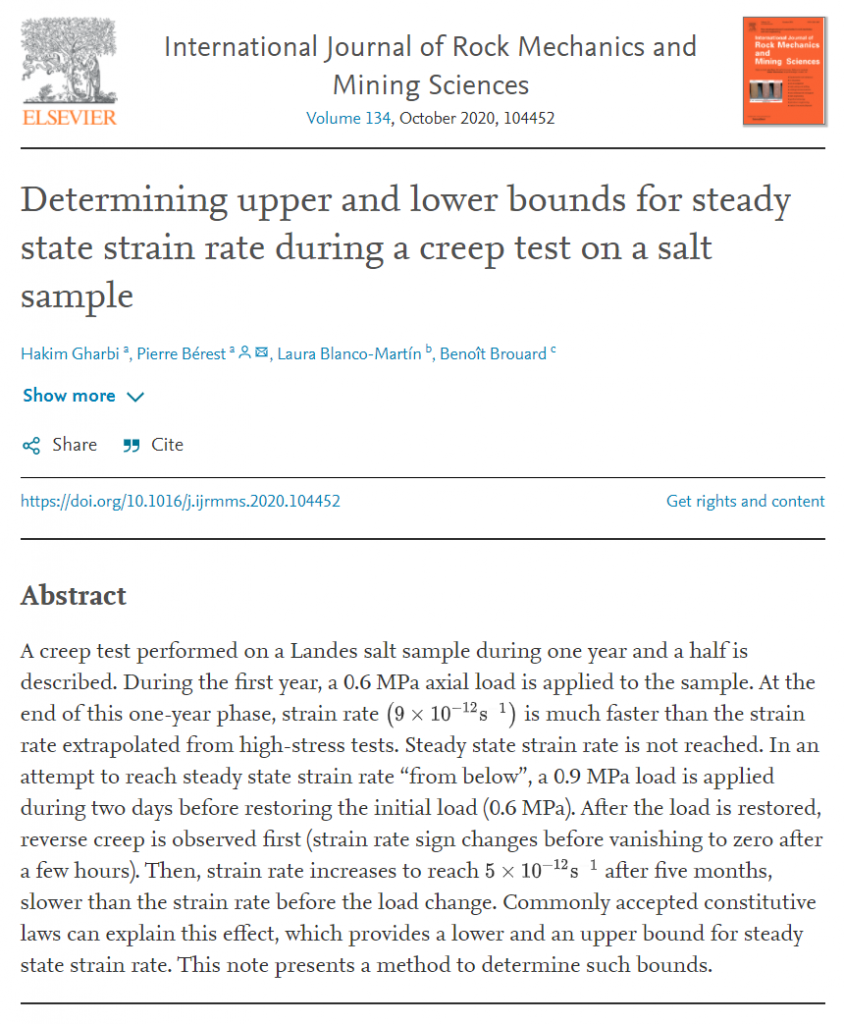
New publication on Determining upper and lower bounds for steady state strain rate during a creep test on a salt sample by Hakim Gharbi, Pierre Bérest, Laura Blanco-Martín and Benoît Brouard in International Journal of Rock Mechanics and Mining Sciences is available on ScienceDirect.
Abstract:
A creep test performed on a Landes salt sample during one year and a half is described. During the first year, a 0.6 MPa axial load is applied to the sample. At the end of this one-year phase, strain rate (9×10−12 s-1) is much faster than the strain rate extrapolated from high-stress tests. Steady state strain rate is not reached. In an attempt to reach steady state strain rate “from below”, a 0.9 MPa load is applied during two days before restoring the initial load (0.6 MPa). After the load is restored, reverse creep is observed first (strain rate sign changes before vanishing to zero after a few hours). Then, strain rate increases to reach 5×10−12 s-1 after five months, slower than the strain rate before the load change. Commonly accepted constitutive laws can explain this effect, which provides a lower and an upper bound for steady state strain rate. This note presents a method to determine such bounds.
